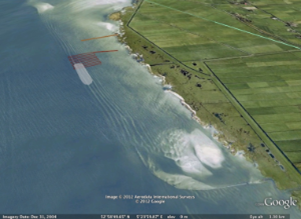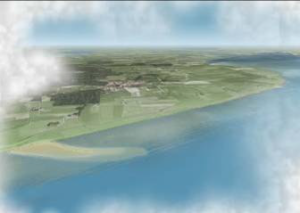Overview
Location: Friesland, The Netherlands
Date: December 2017
Involved parties: Wageningen Environmental Research, Deltares, Witteveen+Bos, Arcadis, Province Friesland, Wetterskip Fryslan, local municipalities, Stichting Het Blauwe Hart
Technology Readiness Level: 7 – system prototype demonstration in operational environment
Keywords: sand engine, sand nourishments

The effect of a sand engine on the coast, how and where the sand moves, and the effects on the vegetation under water and above water is monitored. The knowledge gained will be used to develop a strategy for sustainable protection and enhance the spatial quality of the entire Frisian IJsselmeer coast. The function of a sand engine is based on the use of natural processes in the defense of the coast related to future water level rise and water level fluctuations.

The proposed new water level management in Lake IJsselmeer has negative consequences for the valuable areas and nature reserves outside the dikes along the Frisian IJsselmeer coast, and for water safety for the area behind the dikes.
Abstract
The Building with Nature project ‘Zandmotor’ along the Frisian IJsselmeer coast investigates how a robust coastal defense can be achieved by utilizing natural processes. For this purpose underwater sand nourishment is applied at two pilot sites: Workumerwaard (sand bar constructed in 2011) and Oudemirdum (sand bar constructed in 2013). For a third location, Hindeloopen, a model study was executed.
The main question of the project is whether sand nourishments (‘sand engine’) are a sustainable, cost-effective and ecologically resilient coastal reinforcement measure along the Frisian IJsselmeer coast. The function of a sand engine is based on the use of natural processes in the defense of the coast related to future water level rise and water level fluctuations.
A monitoring program in the period 2011 – 2017 was carried out to follow the effect of the sand engine on the coast, how and where the sand moves, and the effects on the vegetation under water and above water. The knowledge gained in this project will be used to develop a strategy for sustainable protection and enhance the spatial quality of the entire Frisian IJsselmeer coast.
